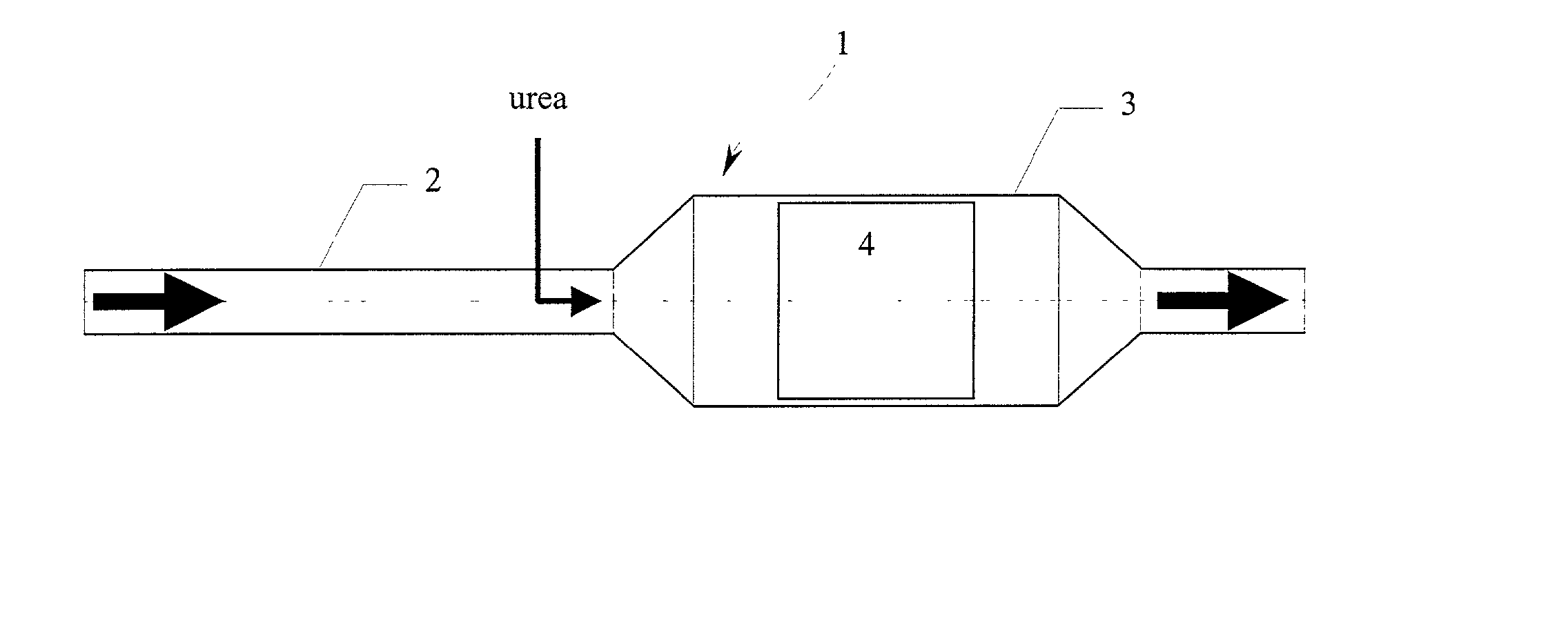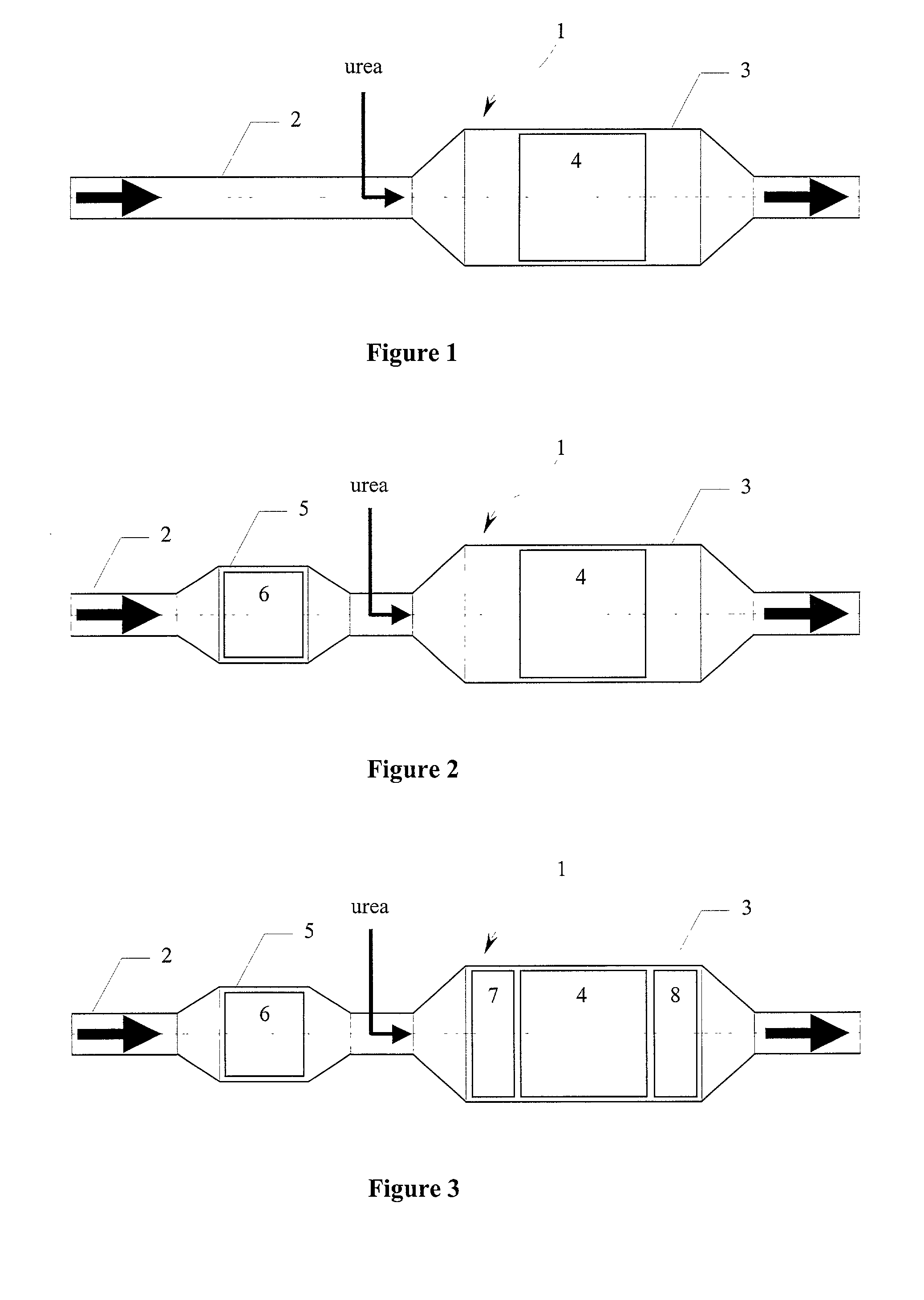Exhaust gas treatment unit for the selective catalytic reduction of nitrogen oxides under lean exhaust gas conditions and a process for the treatment of exhaust gases
a technology of selective catalytic reduction and exhaust gas treatment, which is applied in the direction of exhaust treatment, cyanogen compounds, filtration separation, etc., can solve the problems of both hydrolysis of urea and selective catalytic reduction with modem scr catalysts, and achieve the effect of facilitating the release of nitrogen oxides
- Summary
- Abstract
- Description
- Claims
- Application Information
AI Technical Summary
Benefits of technology
Problems solved by technology
Method used
Image
Examples
Embodiment Construction
[0011] The SCR components in the catalyst may contain a solid acid system of titanium dioxide and vanadium. In addition, the solid acid system may contain at least one component selected from the group consisting of tungsten oxide (WO.sub.3), molybdenum oxide (MoO.sub.3), silicon dioxide, sulfate and zeolites, wherein the zeolites are present in the acid H form or may be exchanged with metal ions. Alternatively, the SCR components contain at least one zeolite, wherein the zeolites are in the acid H form or may be exchanged with metal ions. Due to their acidic properties these materials are able to store ammonia. This is advantageous under strongly varying loads of the engine.
[0012] The NOx storage components preferably contain at least one compound of elements selected from the group consisting of alkali metals, alkaline earth metals and cerium. These components are able to store nitrogen dioxide by forming nitrates. Since 60 to 95 vol. % of the exhaust gas from an internal combusti...
PUM
| Property | Measurement | Unit |
|---|---|---|
| Temperature | aaaaa | aaaaa |
Abstract
Description
Claims
Application Information
 Login to View More
Login to View More - R&D
- Intellectual Property
- Life Sciences
- Materials
- Tech Scout
- Unparalleled Data Quality
- Higher Quality Content
- 60% Fewer Hallucinations
Browse by: Latest US Patents, China's latest patents, Technical Efficacy Thesaurus, Application Domain, Technology Topic, Popular Technical Reports.
© 2025 PatSnap. All rights reserved.Legal|Privacy policy|Modern Slavery Act Transparency Statement|Sitemap|About US| Contact US: help@patsnap.com


